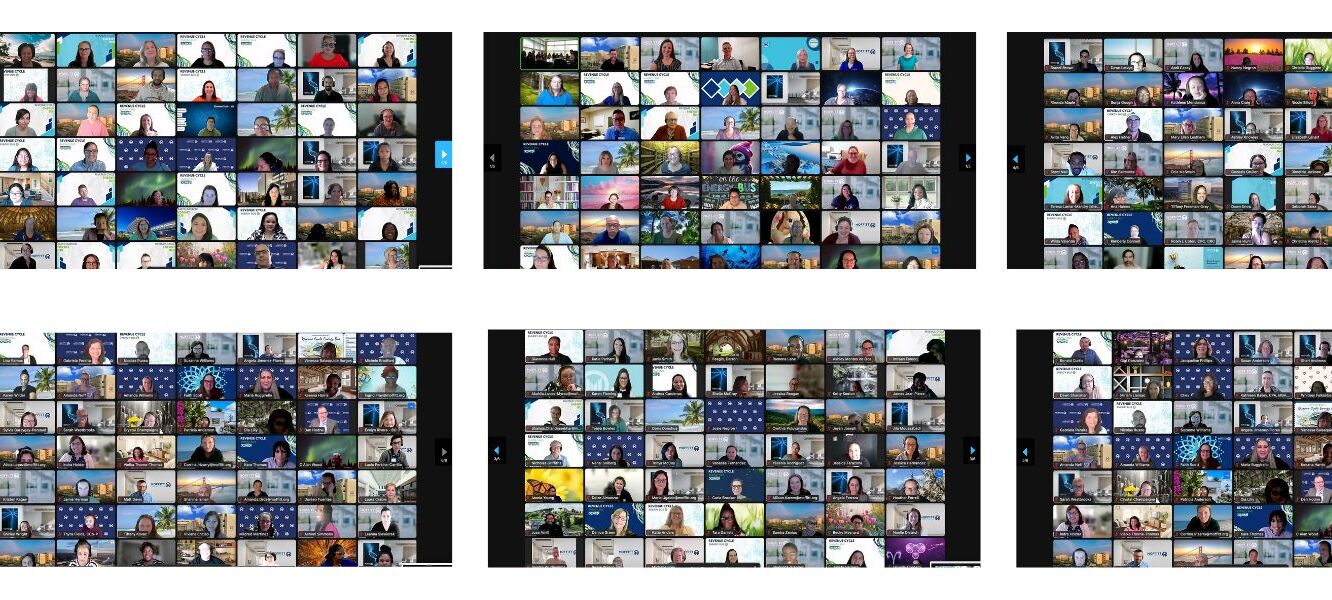Moffitt's Revenue Cycle Defines Work from Home Success
What does it take to manage more than 600 team members who work fully remote? Lynn Ansley, vice president of Revenue Cycle at Moffitt Cancer Center has spent the last four years doing just that. Her team is responsible for authorizing, coding, billing and collecting all the lifesaving clinical services and trials performed at Moffitt. Previously, about 20% of the team worked entirely remote, while 80% worked a combination of on campus and hybrid. During the pandemic, they successfully shifted to an almost entirely remote workforce. Realizing the multitude of ways remote work benefited team members and the organization, the Revenue Cycle team has remained fully remote.
Ansley and members of Moffitt’s Revenue Cycle team share their remote work experiences and advice in this Q+A honoring National Work from Home Day!
How has transitioning to a remote work environment impacted the team’s productivity and overall performance?
We’ve seen an increase in overall productivity and engagement. Post COVID, we attempted hybrid models and saw a drastic decrease in productivity as it was hard for our operational teams to transition from different workspaces. The work in the Revenue Cycle depends on efficient navigation through multiple systems and tracking of all interactions so the audit trail is intact. We measure everything and have seen that the most productive work happens in the work from home setup and actually allows us to bake in more professional development and team building time which is critical to keep us all unified.
How does your team connect and build camaraderie being mostly remote?
We make this a very intentional and continuous effort. We hold quarterly leadership forums where all 80+ leaders share best practices for how they maintain high engagement in their teams. Communication is key and we rolled out the “Revenue Cycle Energy Bus,” which provides us a common language and connection across all 600 team members. It’s based on the book
“The Energy Bus,” by Jon Gordon. We have a shared purpose and know we all play critical roles to keep the Revenue Cycle Energy Bus fueled and headed for the destination, which is to find a cure.
What advice would you give to other healthcare organizations considering a shift to remote work for their teams?
Don’t underestimate the amount of facetime your team members need with leadership to feel connected, engaged and energized. We continue to find ways to engage our Revenue Cycle rockstars through the use of intranet pages and blogs, video spotlights getting to know our leadership, town halls, huddles, skip level meetings and the occasional on site professional development. It’s critical to share your whole self with your team and that can be done virtually with pictures, stories and connection points.
Kara Thomas, performance manager of Collections, shares how remote work has improved her work-life balance.
I enjoy the convenience of my office being only a few steps away, saving me time in the morning and money – no more early morning stops for coffee! I love that I was able to create a workspace at home that allows my creativity to stand out, which in turn helps me stay more focused and show up as my best self each day. Since we’re no longer commuting to work, my work-life balance has improved, allowing me to spend more time with my family and have more flexibility managing personal time and appointments. I recognize how fortunate I am to be able to work from home and feel blessed to have a job that I thoroughly enjoy.
Faith Scott, Financial Clearance Unit supervisor, shares the biggest challenges and advantages of working remote.
The biggest challenge was adjusting to a different onboarding and training process. When I came to Moffitt, our department was already working remotely. I had to learn a new role, including new computer systems and getting to know new employees and coworkers through Zoom calls, chat messages and emails. I learned to take a lot of notes, and I have learned that it’s actually very helpful to have questions answered via messaging and emails, so that I can go back and reference them later.
The biggest advantage has the time I’ve gotten back in my day. Since I no longer have to factor in commute time, there’s much less stress involved in daily activities which previously had to be very carefully factored into each day in between picking up and dropping off my child at school and commuting to and from work. Now that I can run errands such a grocery shopping during the time that I am not stuck in rush hour traffic, it gives me back more time with my family in the evenings and weekends, which is priceless.
Kimberly Connell, Clinical Research Revenue Integrity trainer and educator, shares how her team fosters connection while working remotely.
Our team is entirely remote with some of our leadership even being in different states. One thing we do to stay connected in a personal way, that I absolutely love, is a team Zoom chat named the “Water Cooler Chat.” We use this to recreate some of the casual talk that you would have in the office. On a Monday you might see, “Good Morning. How was everyone’s weekend? Did anything fun or exciting happen?” A team member may share vacation pictures, a funny story about their pet or something as simple as “It just started raining here.” It’s a lighthearted way we can keep up those personal relationships with our colleagues. We also do a weekly team huddle every Monday just to see how everyone is. Sometimes we’ll tell a few jokes our even play a game during this time.



